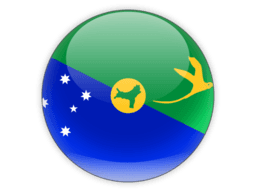
Christmas Island is a territory of Australia located in the Indian Ocean, about 2,600 kilometers northwest of Perth and 500 kilometers south of Jakarta, Indonesia. It is a small, isolated island that covers an area of 135 square kilometers and has a population of around 2,000 people, mostly concentrated in the main settlement of Flying Fish Cove.
The island was originally uninhabited and was discovered by British navigator William Mynors in 1643. The name "Christmas" comes from the fact that Mynors discovered the island on Christmas Day. The island was subsequently used for various purposes over the years, including as a coconut plantation, a prison camp, and a phosphate mine.
Today, Christmas Island is known for its unique flora and fauna, including the endemic Christmas Island red crab, which is known for its annual migration from the forest to the sea to breed. The island also has a number of other unique species, including a variety of bird species and several species of reptiles and mammals.
Tourism is a small but growing industry on Christmas Island, with visitors drawn to the island's natural beauty and wildlife. Popular activities include birdwatching, snorkeling, and diving. The island is also home to a number of historical sites, including the former prison camp and the ruins of the phosphate mine.
National holiday
Australia Day (commemorates the arrival of the First Fleet of Australian settlers), 26 January (1788)
Geography
Area
total: 135 sq km
land: 135 sq km
water: 0 sq km
Climate
tropical with a wet season (December to April) and dry season; heat and humidity moderated by trade winds
Natural resources
phosphate, beaches
People and Society
Population
2,205 (2016 est.)
Ethnic groups
Chinese 70%, European 20%, Malay 10% (2001)
Languages
English (official) 27.6%, Mandarin 17.2%, Malay 17.1%, Cantonese 3.9%, Min Nan 1.6%, Tagalog 1%, other 4.5%, unspecified 27.1% (2016 est.)
Religions
Muslim 19.4%, Buddhist 18.3%, Roman Catholic 8.8%, Protestant 6.5% (includes Anglican 3.6%, Uniting Church 1.2%, other 1.7%), other Christian 3.3%, other 0.6%, none 15.3%, unspecified 27.7% (2016 est.)
Population growth rate
1.11% (2014 est.)
Government
Government type
non-self-governing overseas territory of Australia
Capital
name: The Settlement (Flying Fish Cove)
Economy
Economic overview
high-income Australian territorial economy; development through government services and phosphate mining; operates Australia’s Immigration Detention Centre; increasing tourism and government investments; sustained environmental protections
Agricultural products
NA
Industries
tourism, phosphate extraction (near depletion)
Exports - partners
Malaysia 36%, New Zealand 21%, Indonesia 20%, Australia 10% (2019)
Exports - commodities
calcium phosphates, fertilizers, valves, air pumps, industrial printers (2019)
Imports - partners
Australia 80%, United States 7%, Canada 5% (2019)
Imports - commodities
refined petroleum, cars, iron structures, aircraft, crustaceans (2019)
Mark Christmas Island as Visited
Add Christmas Island to your personal travel map and track your journey around the world. Share your adventures and see your progress grow!